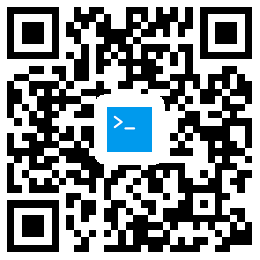Qwen-VL
?
? |
Qwen-VL-Chat
?
?
(Int4:
?
? ) |
Qwen-VL-Plus
?
? |
Qwen-VL-Max
?
?
Web |
API |
WeChat |
Discord |
Paper |
Tutorial
Qwen-VL 是阿里云研发的大规模视觉语言模型(Large Vision Language Model, LVLM)。Qwen-VL 可以以图像、文本、检测框作为输入,并以文本和检测框作为输出。Qwen-VL 系列模型的特点包括:
- 强大的性能:在四大类多模态任务的标准英文测评中(Zero-shot Caption/VQA/DocVQA/Grounding)上,均取得同等通用模型大小下最好效果;
- 多语言对话模型:天然支持多语言对话,端到端支持图片里中英双语的长文本识别;
- 多图交错对话:支持多图输入和比较,指定图片问答,多图文学创作等;
- 首个支持中文开放域定位的通用模型:通过中文开放域语言表达进行检测框标注;
- 细粒度识别和理解:相比于目前其它开源LVLM使用的224分辨率,Qwen-VL是首个开源的448分辨率的LVLM模型。更高分辨率可以提升细粒度的文字识别、文档问答和检测框标注。
Qwen-VL (Qwen Large Vision Language Model) is the visual multimodal version of the large model series, Qwen (abbr. Tongyi Qianwen), proposed by Alibaba Cloud. Qwen-VL accepts image, text, and bounding box as inputs, outputs text and bounding box. The features of Qwen-VL include:
- Strong performance: It significantly surpasses existing open-source Large Vision Language Models (LVLM) under similar scale settings on multiple English evaluation benchmarks (including Zero-shot caption, VQA, DocVQA, and Grounding).
- Multi-lingual LVLM support text recognization: Qwen-VL naturally supports multi-lingual conversation, and it promotes end-to-end recognition of Chinese and English bi-lingual text in images.
- Multi-image interleaved conversations: This feature allows for the input and comparison of multiple images, as well as the ability to specify questions related to the images and engage in multi-image storytelling.
- First generalist model support grounding in Chinese: Detecting bounding boxes through open-domain language expression in both Chinese and English.
- Fine-grained recognization and understanding: Compared to the 224 resolution currently used by other open-source LVLM, the 448 resolution promotes fine-grained text recognition, document QA, and bounding box annotation.
目前,我们提供了 Qwen-VL 系列的两个模型:
- Qwen-VL: Qwen-VL 以 Qwen-7B 的预训练模型作为语言模型的初始化,并以 Openclip ViT-bigG 作为视觉编码器的初始化,中间加入单层随机初始化的 cross-attention,经过约1.5B的图文数据训练得到。最终图像输入分辨率为448。
- Qwen-VL-Chat: 在 Qwen-VL 的基础上,我们使用对齐机制打造了基于大语言模型的视觉AI助手Qwen-VL-Chat,其训练数据涵盖了 QWen-7B 的纯文本 SFT 数据、开源 LVLM 的 SFT 数据、数据合成和人工标注的图文对齐数据。
如果想了解更多关于模型的信息,请点击链接查看我们的技术备忘录。
We release two models of the Qwen-VL series:
- Qwen-VL: The pre-trained LVLM model uses Qwen-7B as the initialization of the LLM, and Openclip ViT-bigG as the initialization of the visual encoder. And connects them with a randomly initialized cross-attention layer. Qwen-VL was trained on about 1.5B image-text paired data. The final image input resolution is 448.
- Qwen-VL-Chat: A multimodal LLM-based AI assistant, which is trained with alignment techniques.
For more details about Qwen-VL, please refer to our technical memo.
依赖项 (Dependency)
- python 3.8及以上版本
- pytorch 1.12及以上版本,推荐2.0及以上版本
- 建议使用CUDA 11.4及以上(GPU用户需考虑此选项)
pip install modelscope -U
pip install transformers accelerate tiktoken -U
pip install einops transformers_stream_generator -U
pip install "pillow==9.*" -U
pip install torchvision
pip install matplotlib -U
快速使用(Quickstart)
您可以通过以下代码轻松调用:
You can easily call the model with the following code:
from modelscope import (
snapshot_download, AutoModelForCausalLM, AutoTokenizer, GenerationConfig
)
import torch
model_id = 'qwen/Qwen-VL-Chat'
revision = 'v1.1.0'
model_dir = snapshot_download(model_id, revision=revision)
torch.manual_seed(1234)
# 请注意:分词器默认行为已更改为默认关闭特殊token攻击防护。
tokenizer = AutoTokenizer.from_pretrained(model_dir, trust_remote_code=True)
# 打开bf16精度,A100、H100、RTX3060、RTX3070等显卡建议启用以节省显存
# model = AutoModelForCausalLM.from_pretrained(model_dir, device_map="auto", trust_remote_code=True, bf16=True).eval()
# 打开fp16精度,V100、P100、T4等显卡建议启用以节省显存
model = AutoModelForCausalLM.from_pretrained(model_dir, device_map="auto", trust_remote_code=True, fp16=True).eval()
# 使用CPU进行推理,需要约32GB内存
# model = AutoModelForCausalLM.from_pretrained(model_dir, device_map="cpu", trust_remote_code=True).eval()
# 默认使用自动模式,根据设备自动选择精度
# model = AutoModelForCausalLM.from_pretrained(model_dir, device_map="auto", trust_remote_code=True).eval()
# 可指定不同的生成长度、top_p等相关超参
model.generation_config = GenerationConfig.from_pretrained(model_dir, trust_remote_code=True)
# 第一轮对话 1st dialogue turn
query = tokenizer.from_list_format([
{'image': 'https://qianwen-res.oss-cn-beijing.aliyuncs.com/Qwen-VL/assets/demo.jpeg'},
{'text': '这是什么'},
])
response, history = model.chat(tokenizer, query=query, history=None)
print(response)
# 图中是一名年轻女子在沙滩上和她的狗玩耍,狗的品种是拉布拉多。她们坐在沙滩上,狗的前腿抬起来,与人互动。
# 第二轮对话 2st dialogue turn
response, history = model.chat(tokenizer, '输出击掌的检测框', history=history)
print(response)
# <ref>"击掌"</ref><box>(211,412),(577,891)</box>
image = tokenizer.draw_bbox_on_latest_picture(response, history)
image.save('output_chat.jpg')
使用量化
import os
os.environ['CUDA_VISIBLE_DEVICES'] = '0'
from modelscope import (
snapshot_download, AutoModelForCausalLM, AutoTokenizer, GenerationConfig,
)
from transformers import BitsAndBytesConfig
import torch
model_id = 'qwen/Qwen-VL-Chat'
revision = 'v1.1.0'
model_dir = snapshot_download(model_id, revision=revision)
torch.manual_seed(1234)
quantization_config = BitsAndBytesConfig(
load_in_4bit=True,
bnb_4bit_compute_dtype=torch.float16,
bnb_4bit_quant_type='nf4',
bnb_4bit_use_double_quant=True,
llm_int8_skip_modules=['lm_head', 'attn_pool.attn'])
tokenizer = AutoTokenizer.from_pretrained(model_dir, trust_remote_code=True)
model = AutoModelForCausalLM.from_pretrained(model_dir, device_map="auto",
trust_remote_code=True, fp16=True,
quantization_config=quantization_config).eval()
model.generation_config = GenerationConfig.from_pretrained(model_dir, trust_remote_code=True)
query = tokenizer.from_list_format([
{'image': 'https://qianwen-res.oss-cn-beijing.aliyuncs.com/Qwen-VL/assets/demo.jpeg'},
{'text': '这是什么'},
])
response, history = model.chat(tokenizer, query=query, history=None)
print(response)
response, history = model.chat(tokenizer, '输出狗的检测框', history=history)
print(response)
image = tokenizer.draw_bbox_on_latest_picture(response, history)
image.save('output_chat2.jpg')
微调(SFT)
代码链接: https://github.com/modelscope/swift/tree/main/examples/pytorch/llm
- 支持的sft方法: lora, qlora, 全参数微调, …
- 支持的模型: qwen系列, qwen-vl系列, baichuan系列, chatglm2系列, llama系列, openbuddy-llama系列, internlm系列, xverse系列, …
- 支持的特性: 模型量化, DDP, 模型并行, gradient checkpointing, 梯度累加, 支持推送ModelScope Hub, 自定义数据集, 多模态和Agent SFT, 多轮对话, …
使用qlora SFT qwen-vl-chat的脚本 (需要10GB显存)
# https://github.com/modelscope/swift/blob/main/examples/pytorch/llm/scripts/qwen_vl_chat/qlora/sft.sh
# Experimental environment: A10
# 10GB GPU memory (not use flash_attn)
PYTHONPATH=../../.. \
CUDA_VISIBLE_DEVICES=0 \
python llm_sft.py \
--model_type qwen-vl-chat \
--sft_type lora \
--template_type chatml \
--dtype bf16 \
--output_dir output \
--dataset coco-en \
--train_dataset_sample 20000 \
--num_train_epochs 1 \
--max_length 2048 \
--quantization_bit 4 \
--bnb_4bit_comp_dtype bf16 \
--lora_rank 8 \
--lora_alpha 32 \
--lora_dropout_p 0. \
--lora_target_modules c_attn attn.c_proj \
--gradient_checkpointing true \
--batch_size 1 \
--weight_decay 0. \
--learning_rate 1e-4 \
--gradient_accumulation_steps 16 \
--max_grad_norm 0.5 \
--warmup_ratio 0.03 \
--eval_steps 100 \
--save_steps 100 \
--save_total_limit 2 \
--logging_steps 10 \
--use_flash_attn false \
--push_to_hub false \
--hub_model_id qwen-vl-chat-qlora \
--hub_private_repo true \
--hub_token 'your-sdk-token' \
评测
我们从两个角度评测了两个模型的能力:
在英文标准 Benchmark 上评测模型的基础任务能力。目前评测了四大类多模态任务:
- Zero-shot Caption: 评测模型在未见过数据集上的零样本图片描述能力;
- General VQA: 评测模型的通用问答能力,例如判断题、颜色、个数、类目等问答能力;
- Text-based VQA:评测模型对于图片中文字相关的识别/问答能力,例如文档问答、图表问答、文字问答等;
- Referring Expression Compression:评测模型给定物体描述画检测框的能力;
试金石 (TouchStone):为了评测模型整体的图文对话能力和人类对齐水平。我们为此构建了一个基于 GPT4 打分来评测 LVLM 模型的 Benchmark:TouchStone。在 TouchStone-v0.1 中:
- 评测基准总计涵盖 300+张图片、800+道题目、27个类别。包括基础属性问答、人物地标问答、影视作品问答、视觉推理、反事实推理、诗歌创作、故事写作,商品比较、图片解题等尽可能广泛的类别。
- 为了弥补目前 GPT4 无法直接读取图片的缺陷,我们给所有的带评测图片提供了人工标注的充分详细描述,并且将图片的详细描述、问题和模型的输出结果一起交给 GPT4 打分。
- 评测同时包含英文版本和中文版本。
评测结果如下:
We evaluated the model's ability from two perspectives:
- Standard Benchmarks: We evaluate the model's basic task capabilities on four major categories of multimodal tasks:
- Zero-shot Caption: Evaluate model's zero-shot image captioning ability on unseen datasets;
- General VQA: Evaluate the general question-answering ability of pictures, such as the judgment, color, number, category, etc;
- Text-based VQA: Evaluate the model's ability to recognize text in pictures, such as document QA, chart QA, etc;
- Referring Expression Comprehension: Evaluate the ability to localize a target object in an image described by a referring expression.
- TouchStone: To evaluate the overall text-image dialogue capability and alignment level with humans, we have constructed a benchmark called TouchStone, which is based on scoring with GPT4 to evaluate the LVLM model.
- The TouchStone benchmark covers a total of 300+ images, 800+ questions, and 27 categories. Such as attribute-based Q&A, celebrity recognition, writing poetry, summarizing multiple images, product comparison, math problem solving, etc;
- In order to break the current limitation of GPT4 in terms of direct image input, TouchStone provides fine-grained image annotations by human labeling. These detailed annotations, along with the questions and the model's output, are then presented to GPT4 for scoring.
- The benchmark includes both English and Chinese versions.
Zero-shot Captioning & General VQA
| Model type | Model | Zero-shot Captioning | General VQA | |||||
|---|---|---|---|---|---|---|---|---|
| NoCaps | Flickr30K | VQAv2dev | OK-VQA | GQA | SciQA-Img (0-shot) |
VizWiz (0-shot) |
||
| Generalist Models |
Flamingo-9B | - | 61.5 | 51.8 | 44.7 | - | - | 28.8 |
| Flamingo-80B | - | 67.2 | 56.3 | 50.6 | - | - | 31.6 | |
| Unified-IO-XL | 100.0 | - | 77.9 | 54.0 | - | - | - | |
| Kosmos-1 | - | 67.1 | 51.0 | - | - | - | 29.2 | |
| Kosmos-2 | - | 66.7 | 45.6 | - | - | - | - | |
| BLIP-2 (Vicuna-13B) | 103.9 | 71.6 | 65.0 | 45.9 | 32.3 | 61.0 | 19.6 | |
| InstructBLIP (Vicuna-13B) | 121.9 | 82.8 | - | - | 49.5 | 63.1 | 33.4 | |
| Shikra (Vicuna-13B) | - | 73.9 | 77.36 | 47.16 | - | - | - | |
| Qwen-VL (Qwen-7B) | 121.4 | 85.8 | 78.8 | 58.6 | 59.3 | 67.1 | 35.2 | |
| Qwen-VL-Chat | 120.2 | 81.0 | 78.2 | 56.6 | 57.5 | 68.2 | 38.9 | |
| Previous SOTA (Per Task Fine-tuning) |
- | 127.0 (PALI-17B) |
84.5 (InstructBLIP -FlanT5-XL) |
86.1 (PALI-X -55B) |
66.1 (PALI-X -55B) |
72.1 (CFR) |
92.53 (LLaVa+ GPT-4) |
70.9 (PALI-X -55B) |
在 Zero-shot Caption 中,Qwen-VL 在 Flickr30K 数据集上取得了 SOTA 的结果,并在 Nocaps 数据集上取得了和 InstructBlip 可竞争的结果。
在 General VQA 中,Qwen-VL 取得了 LVLM 模型同等量级和设定下 SOTA 的结果。
For zero-shot image captioning, Qwen-VL achieves the SOTA on Flickr30K and competitive results on Nocaps with InstructBlip.
For general VQA, Qwen-VL achieves the SOTA under the same generalist LVLM scale settings.
Text-oriented VQA (focuse on text understanding capabilities in images)
| Model type | Model | TextVQA | DocVQA | ChartQA | AI2D | OCR-VQA |
|---|---|---|---|---|---|---|
| Generalist Models | BLIP-2 (Vicuna-13B) | 42.4 | - | - | - | - |
| InstructBLIP (Vicuna-13B) | 50.7 | - | - | - | - | |
| mPLUG-DocOwl (LLaMA-7B) | 52.6 | 62.2 | 57.4 | - | - | |
| Pic2Struct-Large (1.3B) | - | 76.6 | 58.6 | 42.1 | 71.3 | |
| Qwen-VL (Qwen-7B) | 63.8 | 65.1 | 65.7 | 62.3 | 75.7 | |
| Specialist SOTAs (Specialist/Finetuned) |
PALI-X-55B (Single-task FT) (Without OCR Pipeline) |
71.44 | 80.0 | 70.0 | 81.2 | 75.0 |
在文字相关的识别/问答评测上,取得了当前规模下通用 LVLM 达到的最好结果。
分辨率对上述某几个评测非常重要,大部分 224 分辨率的开源 LVLM 模型无法完成以上评测,或只能通过切图的方式解决。Qwen-VL 将分辨率提升到 448,可以直接以端到端的方式进行以上评测。Qwen-VL 在很多任务上甚至超过了 1024 分辨率的 Pic2Struct-Large 模型。
In text-related recognition/QA evaluation, Qwen-VL achieves the SOTA under the generalist LVLM scale settings.
Resolution is important for several above evaluations. While most open-source LVLM models with 224 resolution are incapable of these evaluations or can only solve these by cutting images, Qwen-VL scales the resolution to 448 so that it can be evaluated end-to-end. Qwen-VL even outperforms Pic2Struct-Large models of 1024 resolution on some tasks.
Referring Expression Comprehension
| Model type | Model | RefCOCO | RefCOCO+ | RefCOCOg | GRIT | |||||
|---|---|---|---|---|---|---|---|---|---|---|
| val | test-A | test-B | val | test-A | test-B | val-u | test-u | refexp | ||
| Generalist Models | GPV-2 | - | - | - | - | - | - | - | - | 51.50 |
| OFA-L* | 79.96 | 83.67 | 76.39 | 68.29 | 76.00 | 61.75 | 67.57 | 67.58 | 61.70 | |
| Unified-IO | - | - | - | - | - | - | - | - | 78.61 | |
| VisionLLM-H | 86.70 | - | - | - | - | - | - | - | ||
| Shikra-7B | 87.01 | 90.61 | 80.24 | 81.60 | 87.36 | 72.12 | 82.27 | 82.19 | 69.34 | |
| Shikra-13B | 87.83 | 91.11 | 81.81 | 82.89 | 87.79 | 74.41 | 82.64 | 83.16 | 69.03 | |
| Qwen-VL-7B | 89.36 | 92.26 | 85.34 | 83.12 | 88.25 | 77.21 | 85.58 | 85.48 | 78.22 | |
| Qwen-VL-7B-Chat | 88.55 | 92.27 | 84.51 | 82.82 | 88.59 | 76.79 | 85.96 | 86.32 | - | |
| Specialist SOTAs (Specialist/Finetuned) |
G-DINO-L | 90.56 | 93.19 | 88.24 | 82.75 | 88.95 | 75.92 | 86.13 | 87.02 | - |
| UNINEXT-H | 92.64 | 94.33 | 91.46 | 85.24 | 89.63 | 79.79 | 88.73 | 89.37 | - | |
| ONE-PEACE | 92.58 | 94.18 | 89.26 | 88.77 | 92.21 | 83.23 | 89.22 | 89.27 | - | |
在定位任务上,Qwen-VL 全面超过 Shikra-13B,取得了目前 Generalist LVLM 模型上在 Refcoco 上的 SOTA。
Qwen-VL 并没有在任何中文定位数据上训练过,但通过中文 Caption 数据和 英文 Grounding 数据的训练,可以 Zero-shot 泛化出中文 Grounding 能力。
Qwen-VL achieves the SOTA in all above referring expression comprehension benchmarks.
Qwen-VL has not been trained on any Chinese grounding data, but it can still generalize to the Chinese Grounding tasks in a zero-shot way by training Chinese Caption data and English Grounding data.
我们提供了以上所有评测脚本以供复现我们的实验结果。请阅读 eval/EVALUATION.md 了解更多信息。
We provide all of the above evaluation scripts for reproducing our experimental results. Please read eval/EVALUATION.md for more information.
Chat 能力测评
TouchStone 是一个基于 GPT4 打分来评测 LVLM 模型的图文对话能力和人类对齐水平的基准。它涵盖了 300+张图片、800+道题目、27个类别,包括基础属性、人物地标、视觉推理、诗歌创作、故事写作、商品比较、图片解题等尽可能广泛的类别。关于 TouchStone 的详细介绍,请参考这里(TODO: Link)。
TouchStone is a benchmark based on scoring with GPT4 to evaluate the abilities of the LVLM model on text-image dialogue and alignment levels with humans. It covers a total of 300+ images, 800+ questions, and 27 categories, such as attribute-based Q&A, celebrity recognition, writing poetry, summarizing multiple images, product comparison, math problem solving, etc. Please read eval/EVALUATION.md for more information.
英文版本测评
| Model | Score |
|---|---|
| PandaGPT | 488.5 |
| MiniGPT4 | 531.7 |
| InstructBLIP | 552.4 |
| LLaMA-AdapterV2 | 590.1 |
| mPLUG-Owl | 605.4 |
| LLaVA | 602.7 |
| Qwen-VL-Chat | 645.2 |
中文版本测评
| Model | Score |
|---|---|
| VisualGLM | 247.1 |
| Qwen-VL-Chat | 401.2 |
Qwen-VL-Chat 模型在中英文的对齐评测中均取得当前 LVLM 模型下的最好结果。
The Qwen-VL-Chat model has achieved the best results in both Chinese and English alignment evaluation.
FAQ
如遇到问题,敬请查阅FAQ以及issue区,如仍无法解决再提交issue。
使用协议
研究人员与开发者可使用Qwen-VL和Qwen-VL-Chat或进行二次开发。我们同样允许商业使用,具体细节请查看LICENSE。如需商用,请填写问卷申请。
联系我们
如果你想给我们的研发团队和产品团队留言,请通过邮件(qianwen_opensource@alibabacloud.com)联系我们。










评论